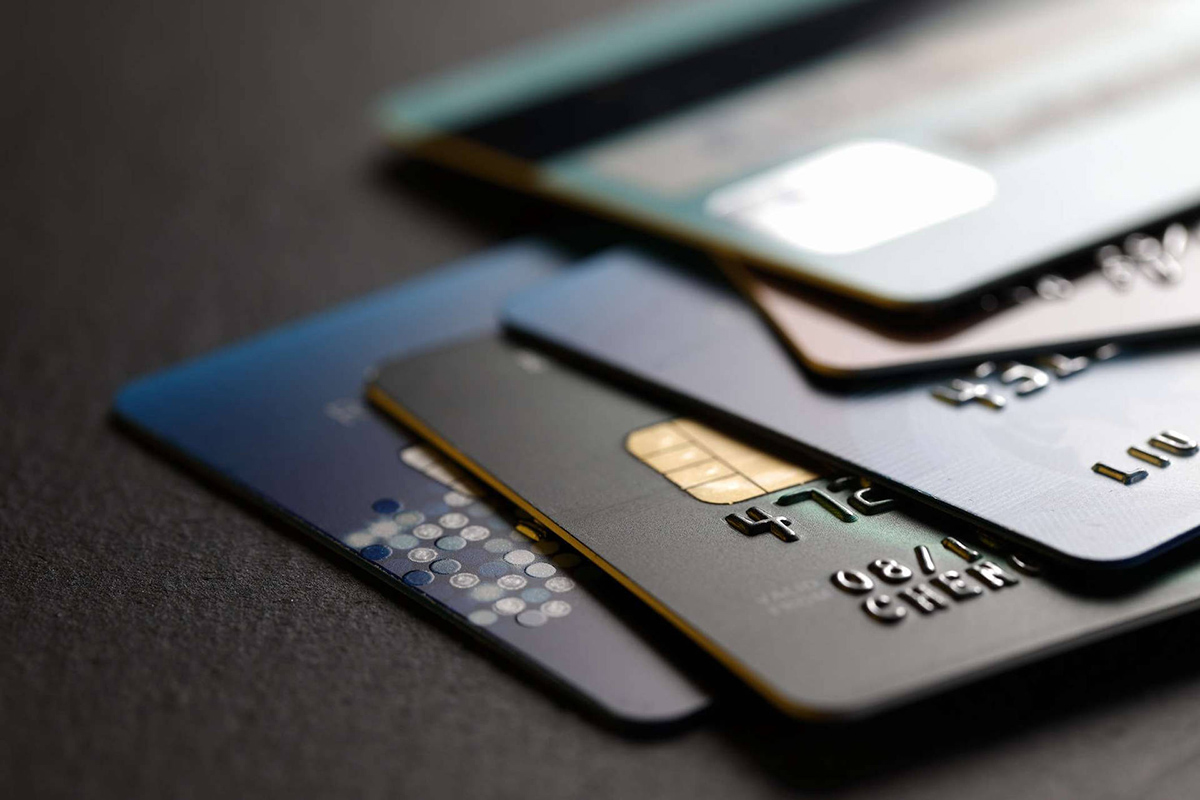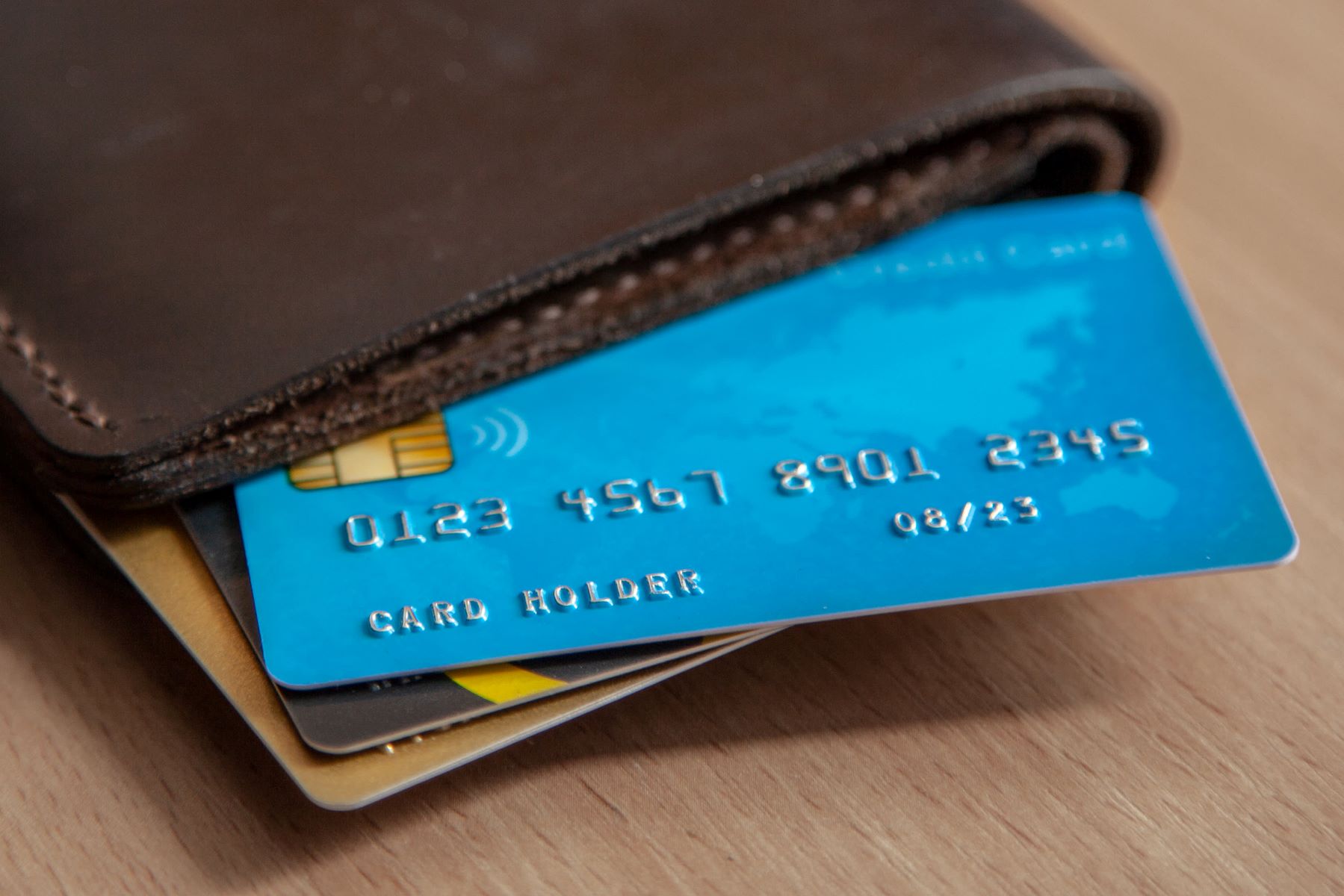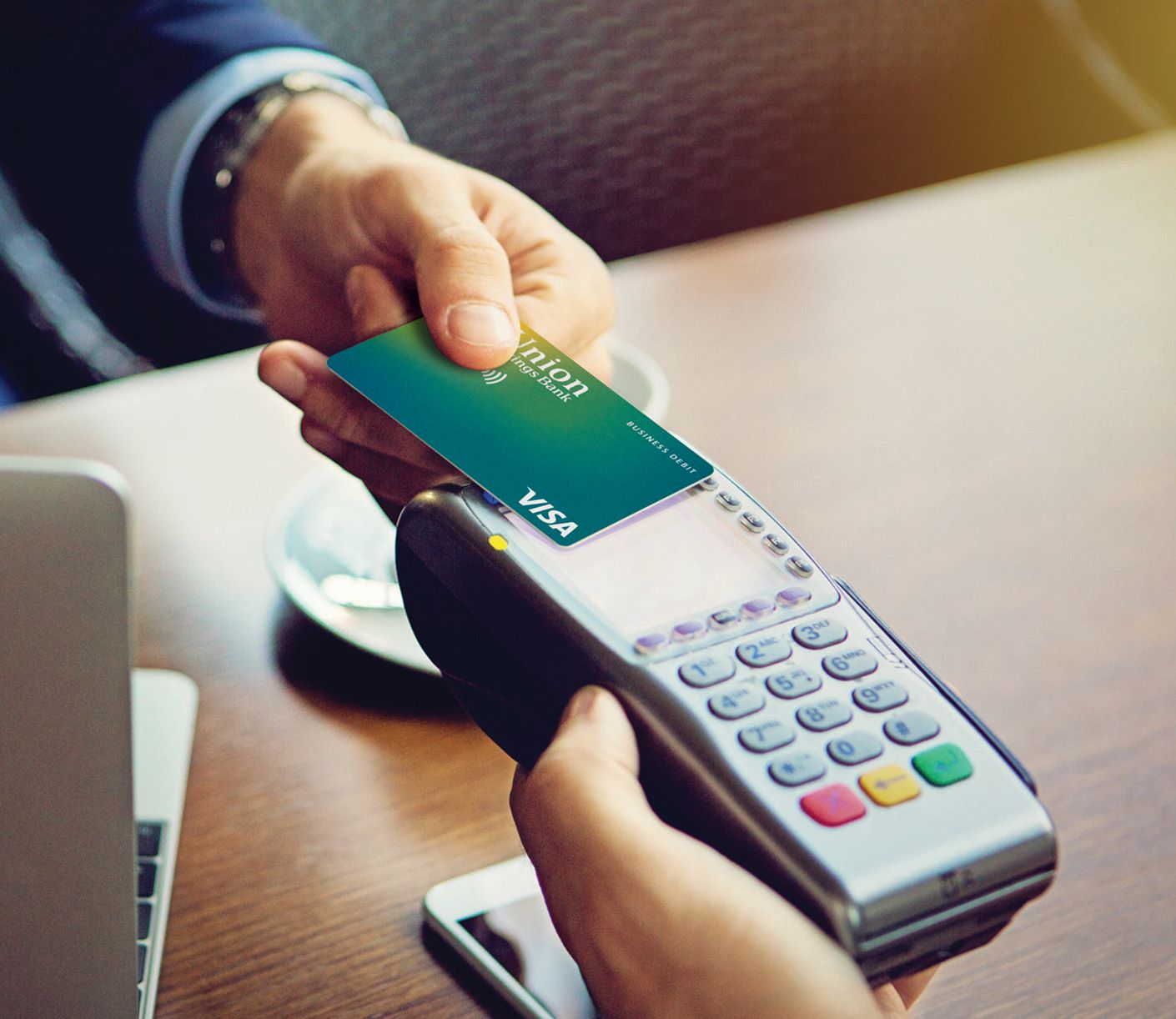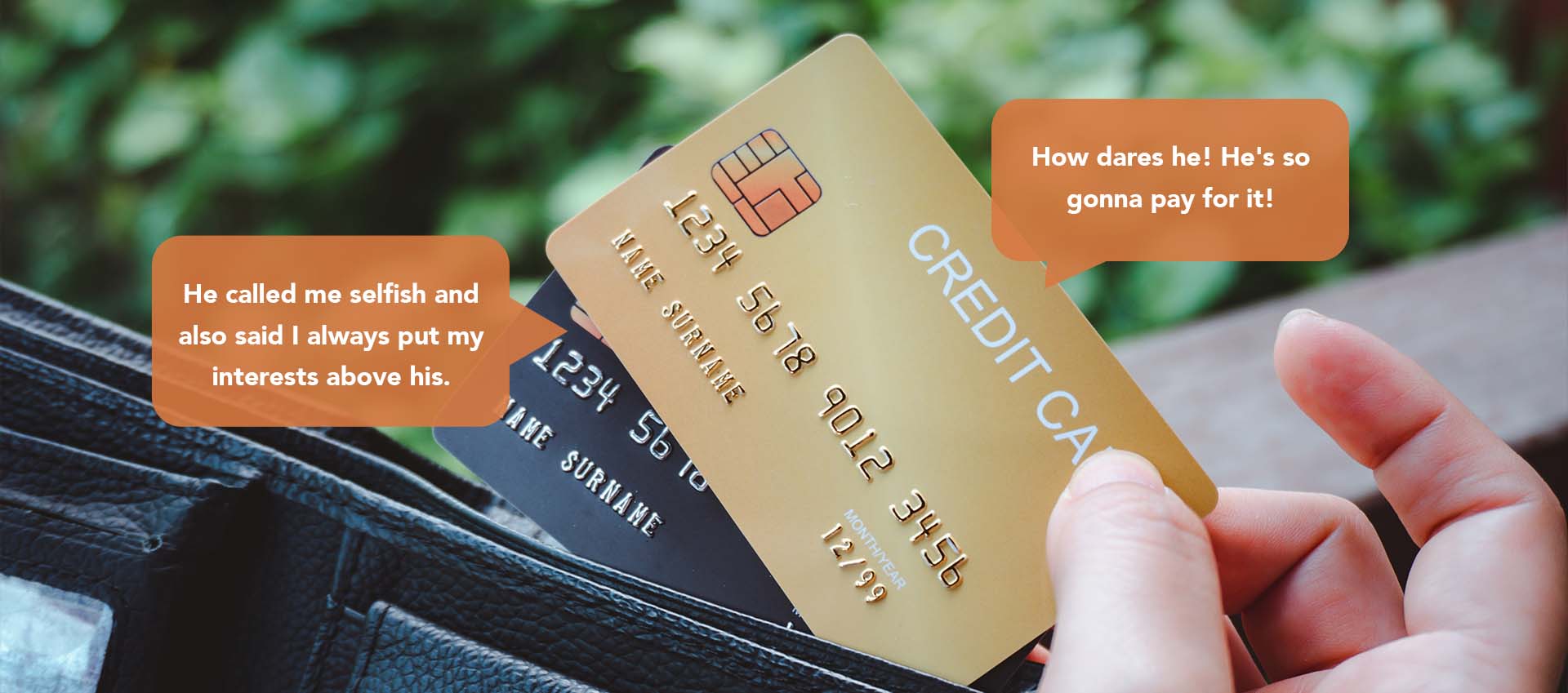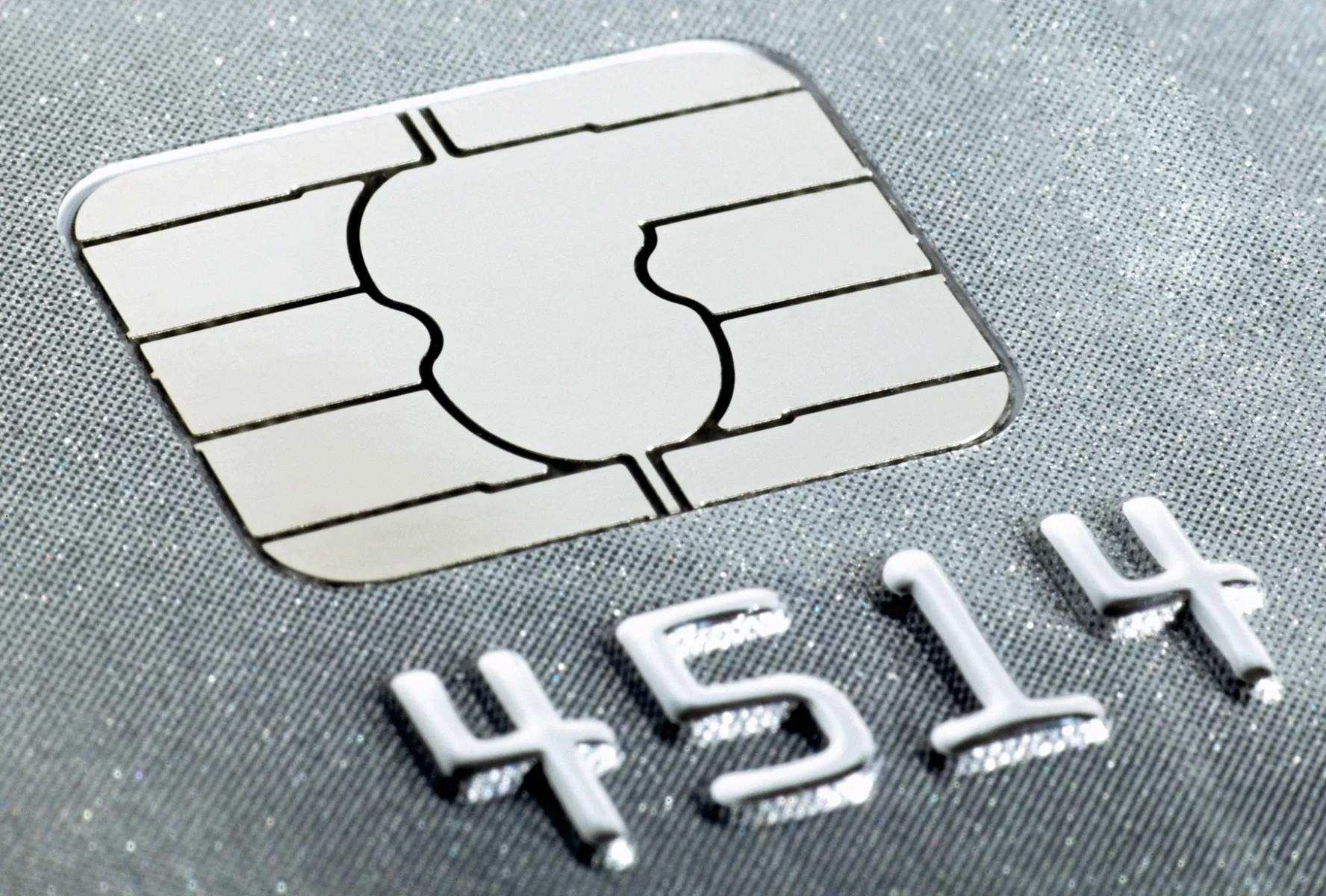

Finance
How To Bypass Credit Card Verification
Modified: February 21, 2024
Learn how to bypass credit card verification and secure your financial transactions with our finance tips and tricks. Stay protected and prevent fraud!
(Many of the links in this article redirect to a specific reviewed product. Your purchase of these products through affiliate links helps to generate commission for LiveWell, at no extra cost. Learn more)
Table of Contents
- Introduction
- Understanding Credit Card Verification
- Legal Consequences of Bypassing Credit Card Verification
- Techniques for Bypassing Credit Card Verification
- Fake Credit Card Numbers
- BIN Attacks
- Social Engineering
- Phishing
- Proxy Servers
- Carding Forums and Marketplaces
- Card Skimmers
- Tips to Protect Yourself from Credit Card Verification Bypass
- Conclusion
Introduction
Credit card verification is an essential security measure implemented by financial institutions and online merchants to protect against fraudulent transactions. It involves verifying the authenticity of credit card details provided by the cardholder, ensuring that the transaction is legitimate and authorized.
While credit card verification is an important step in preventing fraud, there are instances where individuals may try to bypass this process. Bypassing credit card verification can involve various techniques and methods, some of which are legal and others that can lead to severe consequences.
In this article, we will explore the concept of credit card verification and the potential legal implications of attempting to bypass it. We will also delve into different techniques that individuals may use to bypass credit card verification, both legal and illegal. Additionally, we will provide tips on how to protect yourself from credit card verification bypass attempts.
Please note that the information provided in this article is for educational purposes only. It is important to understand the legal and ethical implications of any actions related to credit card verification before attempting to bypass it.
Understanding Credit Card Verification
Credit card verification is a process designed to ensure that the credit card being used for a transaction is legitimate and belongs to the person making the purchase. It is a crucial security measure that helps prevent unauthorized use of credit cards and protects both the cardholder and the merchant.
There are several methods used for credit card verification, including:
- Address Verification System (AVS): This method verifies the billing address provided by the cardholder with the address on file with the credit card issuer. It helps ensure that the person making the transaction is the legitimate cardholder.
- Card Verification Value (CVV/CVV2): The CVV is a three- or four-digit code found on the back of a credit card (or on the front for American Express). It acts as an additional layer of security and is required during online transactions to confirm that the person making the purchase has physical possession of the card.
- 3-D Secure: Commonly known as “Verified by Visa” or “MasterCard SecureCode,” 3-D Secure is an additional layer of security for online credit card transactions. It requires the cardholder to enter a password or a one-time verification code to authenticate the transaction.
By employing these verification methods, merchants can minimize the risk of chargebacks and fraudulent activity. It adds a layer of protection for both parties involved in the transaction. However, it is important to note that these verification methods are not foolproof, and there is always a risk of unauthorized use or fraud.
When attempting to bypass credit card verification, individuals may try to exploit the vulnerabilities in these verification systems. While some methods may be legal and relatively harmless, others may involve fraudulent activities that can lead to serious legal consequences.
In the following sections, we will discuss the legal implications of bypassing credit card verification and explore some of the techniques that individuals may employ to bypass this process.
Legal Consequences of Bypassing Credit Card Verification
Attempting to bypass credit card verification can have serious legal implications. It is important to remember that credit card verification is a security measure designed to protect against fraudulent transactions and unauthorized use of credit cards. Any attempt to circumvent these measures can be considered illegal and may result in criminal charges.
Here are some potential legal consequences of bypassing credit card verification:
- Fraud Charges: Bypassing credit card verification by providing false information or using stolen credit card details can lead to charges of fraud. Fraudulent activities are taken very seriously by law enforcement, and if convicted, individuals may face significant fines and imprisonment.
- Identity Theft: Certain techniques used to bypass credit card verification involve obtaining personal and financial information from unsuspecting individuals. This can lead to charges of identity theft, another serious offense that carries severe legal penalties.
- Money Laundering: In some cases, bypassing credit card verification is done with the intention of laundering money or facilitating illegal activities. Money laundering is a criminal offense that involves disguising the origins of illegally obtained funds. Engaging in money laundering can result in hefty fines and imprisonment.
It is important to note that laws regarding credit card fraud and unauthorized transactions vary from one jurisdiction to another. What may be illegal in one country may be viewed differently in another. However, with the increasing global cooperation in combating financial crimes, individuals who attempt to bypass credit card verification are likely to face legal consequences, regardless of their location.
It is essential to understand the potential legal ramifications before engaging in any activities related to bypassing credit card verification. The repercussions can be severe and have a lasting impact on an individual’s personal and professional life.
In the following sections, we will explore various techniques that individuals may employ in an attempt to bypass credit card verification. It is important to note that some of these techniques may be legal, while others may involve illegal activities. It is crucial to understand the legal implications of each method before considering any actions.
Techniques for Bypassing Credit Card Verification
Individuals who attempt to bypass credit card verification employ various techniques and methods to circumvent the security measures put in place by financial institutions and online merchants. It is important to note that while some of these techniques may be legal to some extent, others are outright illegal and can lead to severe legal consequences.
Here are some techniques that individuals may use to bypass credit card verification:
- Fake Credit Card Numbers: Some individuals may attempt to create or use fake credit card numbers to make purchases or access services without going through the verification process. These fake credit card numbers often fail the verification process and are quickly detected by merchants.
- BIN Attacks: BIN (Bank Identification Number) attacks involve analyzing the patterns in the first six digits of a credit card number to determine the issuing bank or card type. By knowing the BIN, individuals can generate valid credit card numbers and bypass the verification process.
- Social Engineering: Social engineering techniques involve manipulating individuals or customer service representatives to disclose sensitive credit card information. This can include techniques like impersonation, pretexting, or phishing emails designed to trick individuals into providing their credit card details.
- Phishing: Phishing involves creating fake websites or emails that mimic legitimate financial institutions or online merchants. These fraudulent websites or emails trick individuals into entering their credit card information, thinking they are providing it to a legitimate organization.
- Proxy Servers: Proxy servers allow individuals to mask their real IP address and location. By using proxy servers, individuals can make it appear as if their transactions are originating from a different country, bypassing certain verification checks based on geographical location.
- Carding Forums and Marketplaces: Carding forums and underground marketplaces exist where individuals can buy and sell stolen credit card information. These platforms facilitate illegal activities and can provide individuals with access to verified credit card details.
- Card Skimmers: Card skimmers are devices placed on legitimate card payment terminals or ATMs to capture credit card information. By using card skimmers, attackers can collect credit card details and use them for fraudulent transactions without going through the verification process.
It is important to note that engaging in any of these techniques can have serious legal consequences. Legal jurisdictions have strict laws against unauthorized access to financial information, fraud, and identity theft. What may seem like a harmless bypass attempt can lead to severe legal repercussions.
In the next section, we will provide tips on how to protect yourself from credit card verification bypass attempts and ensure the security of your financial information.
Fake Credit Card Numbers
One technique used for bypassing credit card verification is the creation or use of fake credit card numbers. These fake credit card numbers are typically generated using algorithms that mimic the structure of valid credit card numbers. The intent is to use these fake numbers to make purchases or access services without going through the verification process.
However, it is important to note that fake credit card numbers are easily detectable by merchants and financial institutions. They often fail the verification process due to inconsistencies with the issuing bank, card type, or the validity of the number itself. This means that relying on fake credit card numbers for unauthorized transactions is highly ineffective and likely to get caught.
Additionally, engaging in the creation or use of fake credit card numbers is illegal and can have severe legal consequences. It is a form of credit card fraud and is punishable by law. Credit card issuers and law enforcement agencies are continually improving their systems to detect fraudulent activities, and individuals attempting to use fake credit card numbers can face criminal charges if caught.
It is crucial to understand that the consequences of using fake credit card numbers extend beyond legal repercussions. It can damage one’s reputation, lead to blacklisting by merchants, and have a lasting impact on one’s financial future.
Therefore, it is highly recommended to always use legitimate and valid credit card information for transactions. When making online purchases, ensure that the website is secure and reputable. By doing so, you can protect yourself from being involved in illegal activities and safeguard your financial information.
In the next section, we will explore another technique individuals may use to bypass credit card verification: BIN Attacks.
BIN Attacks
BIN (Bank Identification Number) attacks are a technique used to bypass credit card verification by exploiting the patterns in the first six digits of a credit card number. These digits provide valuable information about the issuing bank, the card type, and other details related to the credit card.
By analyzing BINs and understanding the patterns associated with different banks and card types, individuals can generate valid credit card numbers that can pass the verification process. This allows them to make unauthorized purchases or access services without triggering any alarms.
However, it is important to note that BIN attacks are not foolproof and can be easily detected by sophisticated fraud detection systems implemented by financial institutions and merchants. These systems are designed to identify patterns and anomalies in credit card transactions, including BIN inconsistencies.
Moreover, engaging in BIN attacks is illegal and can lead to serious legal consequences. It is a form of credit card fraud and can result in criminal charges if caught. Law enforcement agencies and credit card issuers actively work together to identify and prosecute individuals involved in such illegal activities.
To protect against BIN attacks, financial institutions and merchants employ advanced fraud prevention measures. They continually update their systems to detect suspicious transactions and patterns, including those associated with BIN attacks. This ongoing effort helps to minimize the risk of unauthorized transactions and ensures the security of customers’ financial information.
As a customer, it is crucial to stay vigilant and take precautions to protect your credit card information. Regularly monitor your credit card statements for any unauthorized transactions and report any suspicious activity to your credit card issuer immediately. Avoid sharing your credit card information with untrusted sources and only make purchases from reputable merchants with secure payment gateways.
In the next section, we will explore another technique that individuals may use to bypass credit card verification: Social Engineering.
Social Engineering
Social engineering is a technique used to bypass credit card verification by manipulating individuals or customer service representatives to disclose sensitive credit card information. It capitalizes on human psychology and exploits trust in order to obtain confidential data.
There are various methods of social engineering that individuals may employ to gather credit card information:
- Impersonation: In this technique, the attacker pretends to be someone they are not, such as a bank representative or a customer service agent. They may reach out to individuals via phone, email, or even in person, and use persuasive techniques to convince them to reveal their credit card details.
- Pretexting: Pretexting involves creating a false pretext or scenario to deceive individuals into providing their credit card information. The attacker may impersonate a legitimate organization or create a scenario that requires urgent action, inducing the victim to divulge confidential details.
- Phishing Emails: Phishing emails are designed to mimic legitimate emails from financial institutions or merchants. They often contain convincing logos, branding, and language, leading recipients to believe they are authentic. By clicking on links within these emails, individuals may unknowingly provide their credit card information to attackers.
Social engineering attacks can be highly effective as they exploit human vulnerabilities and trust. However, it is important to note that engaging in social engineering techniques is illegal and can lead to severe legal consequences, including charges of fraud and identity theft.
To protect yourself from social engineering attacks, it is crucial to be cautious and skeptical of any requests for credit card information. Never provide credit card details over the phone or via email unless you initiate the contact and are certain of the legitimacy of the recipient.
Furthermore, be wary of suspicious emails, especially those requesting urgent action or containing unusual attachments or links. Always double-check the sender’s email address and look for signs of phishing, such as spelling errors or generic greetings.
Finally, educate yourself and others about the dangers of social engineering and the importance of safeguarding personal and financial information. Recognizing the tactics used by attackers is the first line of defense in preventing social engineering attacks.
In the next section, we will explore another technique individuals may use to bypass credit card verification: phishing.
Phishing
Phishing is a technique commonly used to bypass credit card verification by tricking individuals into providing their credit card information through fraudulent means. It involves creating fake websites or emails that imitate legitimate financial institutions or online merchants to deceive users.
Phishing attacks typically rely on social engineering tactics to convince individuals to disclose their credit card details. Attackers may send emails claiming to be from a trusted source, such as a bank or an e-commerce platform. These emails often contain urgent or enticing messages that prompt recipients to click on links or provide their credit card information.
Once individuals click on the links within phishing emails, they are directed to fake websites that closely resemble legitimate ones. These fake websites are designed to capture credit card information, such as card numbers, CVV codes, and even login credentials for banking or shopping accounts.
It is crucial to be cautious when encountering emails or websites that request credit card information. Here are some tips to help protect against phishing attacks:
- Verify the legitimacy: Pay close attention to the email sender’s domain name and check for any suspicious signs, such as misspellings or generic greetings. If in doubt, contact the organization directly through their official website or customer service number to confirm the authenticity of the request.
- Do not click on suspicious links: Avoid clicking on links in unsolicited emails or pop-up messages. Instead, manually enter the website’s URL in the browser or use a bookmarked link to access the legitimate website.
- Check website security: Before entering credit card information on a website, ensure that it is secure. Look for the “https” prefix in the URL and a padlock symbol in the address bar. These indicate that the website has a valid SSL certificate and encrypts data transmitted between your device and the website.
- Keep software updated: Regularly update your web browser and security software to protect against known phishing techniques. These updates often include patches to address vulnerabilities that attackers may exploit.
By being cautious and staying vigilant, you can reduce the risk of falling victim to phishing attacks and keep your credit card information secure.
In the next section, we will explore another technique individuals may use to bypass credit card verification: proxy servers.
Proxy Servers
Proxy servers are commonly used to bypass credit card verification by masking the user’s real IP address and geographical location. They act as intermediaries between the user’s device and the website or service they are accessing, allowing them to appear as if they are connecting from a different location.
By using a proxy server, individuals can bypass certain verification checks that are based on geographical location. For example, if a particular service or website restricts access to users from specific countries, individuals can use a proxy server located in an allowed country to bypass this restriction.
It is important to note that while proxy servers can help individuals access restricted content or services, they may not necessarily bypass credit card verification entirely. Verification processes often involve multiple factors, such as AVS (Address Verification System) or CVV (Card Verification Value), which are independent of the user’s IP address or geographical location.
Moreover, it is crucial to understand that using proxy servers for nefarious purposes, such as fraudulent activities or unauthorized transactions, is illegal and can lead to severe legal consequences. Engaging in activities that violate the terms of service or commit fraud can result in criminal charges.
It is important to exercise caution when using proxy servers and ensure that you are complying with all applicable laws and regulations. Legitimate use cases for proxy servers include preserving anonymity or accessing regionally restricted content in a legal and ethical manner.
When it comes to credit card transactions, it is recommended to use valid credit card information and comply with the verification processes put in place by financial institutions and merchants. This ensures the security of your financial information and protects you from legal and financial repercussions.
In the next section, we will explore another technique individuals may use to bypass credit card verification: carding forums and marketplaces.
Carding Forums and Marketplaces
Carding forums and underground marketplaces exist on the dark web where individuals can buy and sell stolen credit card information. These platforms facilitate illegal activities and pose a significant threat to both the individuals whose credit card information is stolen and the overall security of online transactions.
On these forums and marketplaces, individuals can find a range of services related to credit card fraud, including the sale of stolen credit card details, tutorials on how to use stolen credit card information, and even specialized tools and software designed to aid in fraudulent activities.
By purchasing stolen credit card information from these platforms, individuals can attempt to bypass credit card verification and make unauthorized purchases or engage in other illegal activities.
However, it is important to recognize that participating in carding forums and marketplaces is illegal and can lead to severe legal consequences. It is a form of credit card fraud and often involves identity theft, which are serious criminal offenses.
Law enforcement agencies actively monitor and investigate carding forums and marketplaces to identify and prosecute individuals involved in these illegal activities. There have been numerous successful operations worldwide targeting these platforms and dismantling criminal networks.
As a responsible user of the internet, it is crucial to refrain from engaging in any activities related to carding forums or marketplaces. Support efforts to combat credit card fraud by reporting any suspicious activities or platforms to the appropriate authorities or organizations, such as your local law enforcement agency or the credit card issuer.
By staying away from these illegal platforms and promoting awareness about their risks, we can collectively contribute to a safer digital environment and protect individuals from falling victim to credit card fraud.
In the next section, we will explore another technique individuals may use to bypass credit card verification: card skimmers.
Card Skimmers
Card skimmers are devices used in physical locations, such as ATMs, gas pumps, or point-of-sale terminals, to capture credit card information of unsuspecting individuals. These devices are designed to discreetly read the magnetic stripe or chip of a credit card, allowing attackers to collect the card data for later use in fraudulent transactions.
Card skimmers come in various forms, ranging from overlay devices placed on top of legitimate card readers to more sophisticated internal skimmers installed within compromised machines. They can be difficult to detect, as they are often designed to blend seamlessly with the appearance of the legitimate card reader.
When an individual unknowingly inserts their credit card into a compromised terminal, the card skimmer captures the necessary information, including the card number, expiration date, and sometimes even the cardholder’s name. Attackers can then use this stolen information to bypass credit card verification and make unauthorized purchases or engage in fraudulent activities.
It is important to note that using card skimmers is illegal and can result in severe legal consequences. Installing or using these devices is not only a violation of the law but also a breach of trust and privacy.
To protect yourself from falling victim to card skimmers:
- Inspect card readers: Before inserting your card into an ATM, gas pump, or any other card reader, inspect the device for any signs of tampering or suspicious attachments. Look for parts that don’t seem to fit properly or appear out of place.
- Use secure ATMs: When possible, use ATMs located in well-lit and high-traffic areas. Preferably, use ATMs inside banks or other secure locations, as they are less likely to be targeted by attackers.
- Cover your hand: When entering your PIN at an ATM or point-of-sale terminal, cover the keypad with your hand or another object to prevent hidden cameras or onlookers from capturing your PIN.
- Monitor your accounts: Regularly review your credit card statements and account activity for any suspicious transactions. If you notice any unauthorized charges, report them to your credit card issuer immediately.
By being vigilant and taking necessary precautions, you can minimize the risk of falling victim to card skimmers and help ensure the security of your credit card information.
It is essential to remember that engaging in any activities that involve the use of card skimmers is illegal and can result in severe legal consequences.
Now, let’s move on to the tips for protecting yourself from credit card verification bypass attempts.
Tips to Protect Yourself from Credit Card Verification Bypass
While credit card verification measures are in place to protect against fraudulent activities, it is essential to take additional steps to safeguard your credit card information. By following these tips, you can reduce the risk of falling victim to credit card verification bypass attempts:
- Secure your personal information: Keep your credit card details, such as the card number, CVV code, and expiration date, confidential. Avoid sharing this information with untrusted sources or over insecure communication channels.
- Use strong passwords: Create strong, unique passwords for your online accounts, including your credit card accounts. Avoid using easily guessable passwords and consider using a password manager to securely store your login credentials.
- Regularly monitor your accounts: Keep a close eye on your credit card statements and account activity. Promptly report any suspicious transactions to your credit card issuer and request a card replacement if needed.
- Be cautious of phishing emails: Be wary of emails requesting your credit card information. Legitimate organizations won’t ask you to provide sensitive data via email. Avoid clicking on suspicious links and verify the authenticity of emails before sharing any information.
- Shop from reputable merchants: When making online purchases, ensure that you are transacting with trusted and reputable merchants. Look for secure payment gateways and check for the padlock symbol and “https” prefix in the website URL.
- Keep your devices secure: Install reputable antivirus software and keep your operating system and applications up to date with the latest security patches. Regularly scan your devices for malware that could compromise your credit card information.
- Protect your physical credit card: Keep your credit card safe and secure. Do not lend it to others, and avoid leaving it unattended in public places. If your card is lost or stolen, report it to your credit card issuer immediately.
- Enable transaction notifications: Sign up for transaction notifications provided by your credit card issuer. This way, you can receive alerts for any suspicious or unauthorized transactions in real-time.
By following these tips, you can enhance the security of your credit card information and minimize the risk of credit card verification bypass attempts. It is crucial to stay informed about the latest security practices and remain vigilant when it comes to protecting your financial data.
Remember, engaging in any activities that involve attempting to bypass credit card verification is illegal and can lead to severe legal consequences. It is always best to use legitimate and valid credit card information for authorized transactions.
Now that you are equipped with knowledge on how to protect yourself, always prioritize the security of your credit card information and maintain a proactive approach to online security.
Do you have any other questions?
Conclusion
Credit card verification is a vital security measure implemented by financial institutions and online merchants to protect against fraudulent transactions and unauthorized use of credit cards. Bypassing credit card verification is not only unethical but also illegal, with severe legal consequences.
In this article, we have explored various techniques that individuals may attempt to use to bypass credit card verification. From fake credit card numbers and BIN attacks to social engineering, phishing, proxy servers, carding forums, and card skimmers, these techniques pose significant risks to personal and financial security.
It is essential to understand the legal implications and ethical considerations involved in any actions related to credit card verification. Engaging in illegal activities such as credit card fraud, identity theft, or using stolen credit card information can lead to criminal charges and severe penalties.
To protect yourself from credit card verification bypass attempts, it is crucial to secure your personal information, use strong passwords, monitor your accounts regularly, be cautious of phishing attempts, shop from reputable merchants, keep your devices secure, protect your physical credit card, and enable transaction notifications provided by your credit card issuer.
By following these tips and staying vigilant, you can reduce the risk of falling victim to credit card verification bypass attempts and keep your credit card information secure.
Remember, being a responsible user means respecting the laws and regulations surrounding credit card usage, prioritizing security, and maintaining your integrity.
If you have any further questions or concerns about credit card verification or online security, seek guidance from your financial institution or a trusted authority.
Stay informed, stay safe, and protect your financial well-being.



